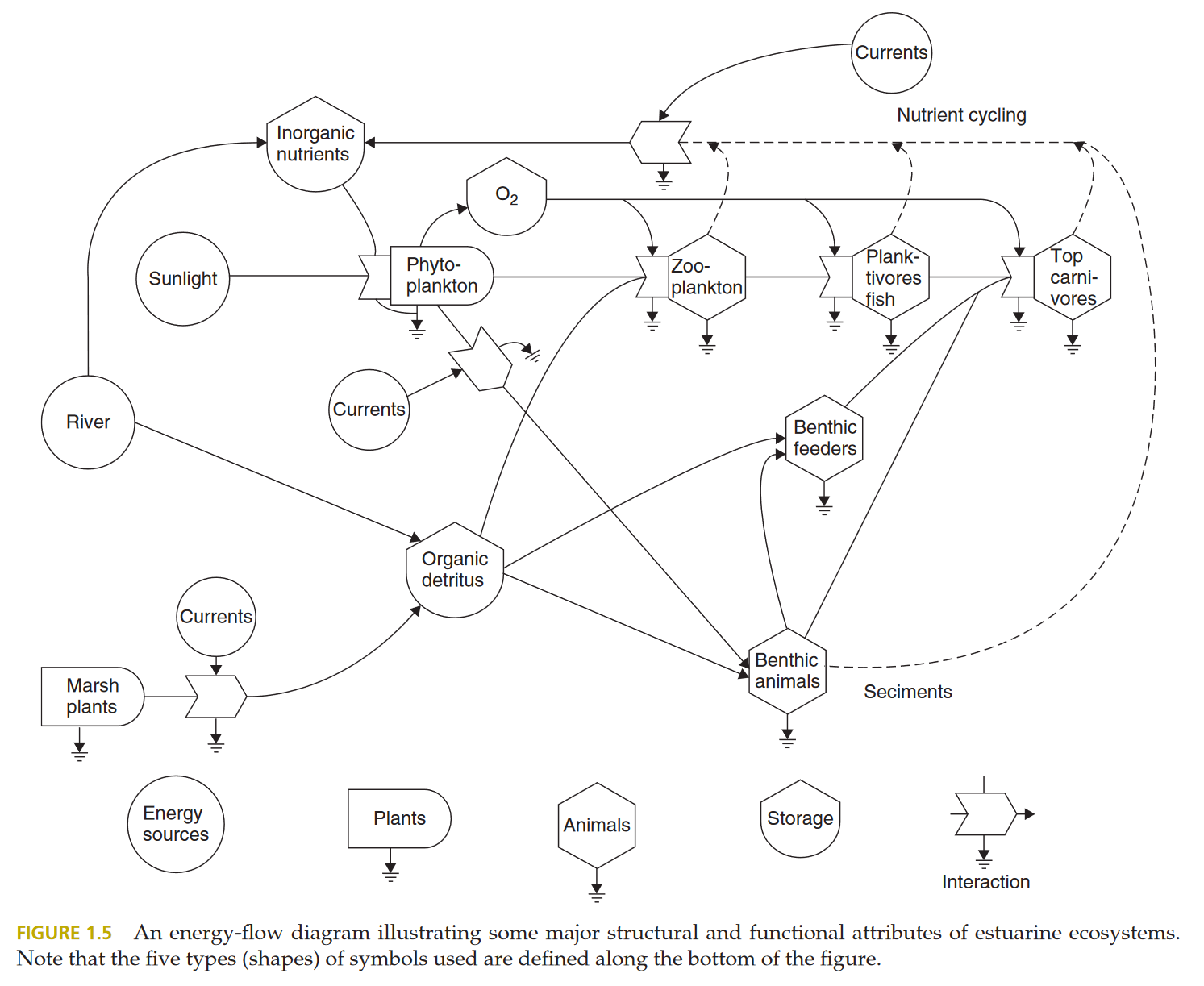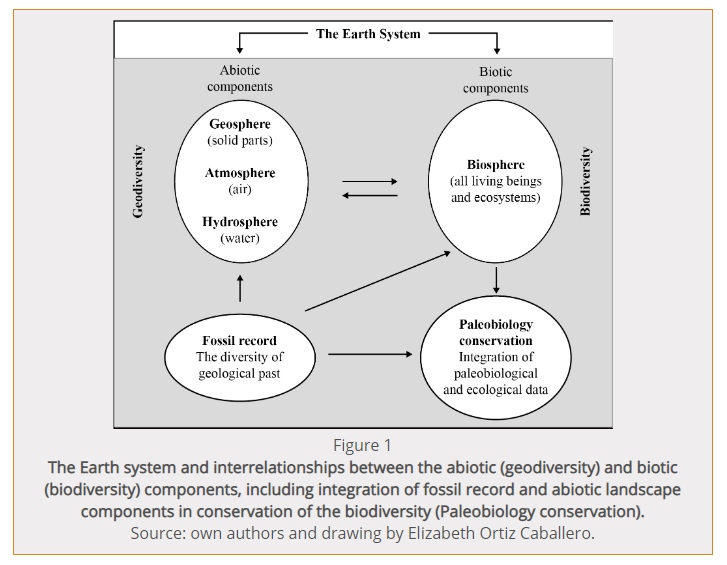Brackish
This is a spin-of of the Deltas project with a lot of overlap but a potentially broader scope. Consider together.
Definitions
Brackish waters are transitional zones where fresh water from rivers and streams mix with saltwater from the sea. These unique ecosystems are typically found in estuaries, mangroves, and coastal wetlands.
Occurs anywhere where a balanced inflow of salts and fresh water produces an intermediate salinity. As fresh water continuously evaporates, the salinity can rise rapidly if the fresh water is not added.
The supply of the two components (salt and fresh water) can have different patterns.
Thienemann, August, and Adolf Remane. Biology of Brackish Water. 2nd ed. 1958. Reprint, Stuttgart: Schweizerbart, 1971.
Brackish water, generally defined as water with TDS content between that of freshwater (≤500 mg l−1 TDS) and seawater (33 000–48 000 mg l−1 TDS)
Part of fresh-brackish-marine systems
Includes:
- estuaries
- coastal wetlands
- river deltas
- coastal marshes
- wetlands
- estuarine microbial ecology, benthic algae, phytoplankton, zooplankton, benthos, nekton, wildlife, food webs, metabolism
- waterscapes
Topics:
- brackish water ecology
- estuarine ecology

Day, John W. Estuarine Ecology. 2nd ed. 1989. Reprint, Hoboken: Wiley-Blackwell, 2012.
Ecological Importance
-
Biodiversity: Brackish waters support a diverse range of plant and animal species. Many of these species are specially adapted to the fluctuating salinity levels, making these ecosystems unique habitats for a variety of organisms, such as fish, crustaceans, molluscs, and various plant species.
-
Nurseries: These ecosystems serve as vital breeding and nursery grounds for many fish and shellfish species. Juvenile fish find shelter and abundant food sources in brackish waters, which help them grow and develop before venturing into open ocean environments.
-
Water filtration: Brackish water ecosystems, particularly mangroves and marshes, help filter pollutants and excess nutrients from runoff, improving overall water quality. This process also helps protect coastal areas from the impacts of eutrophication, which can lead to harmful algal blooms and dead zones.
-
Carbon sequestration: Mangroves, marshes, and seagrass beds in brackish water environments are efficient at capturing and storing carbon dioxide, making them critical in mitigating the impacts of climate change. These ecosystems are sometimes referred to as "blue carbon" sinks.
-
Coastal protection: Brackish water ecosystems such as mangroves and salt marshes provide natural barriers against coastal erosion, storm surges, and flooding. They help stabilize shorelines and dissipate wave energy, reducing the impact of natural disasters on coastal communities.
Human-Cultural Importance
- Economic value:
- commercial and recreational fisheries
- ecotourism
- historically, peat
- Traditional practices: sustenance, transportation, and cultural practices
- Education and research: outdoor laboratories for scientists, researchers, and students
- Aesthetic and spiritual value: humans find inspiration, solace, and "connection with nature" that is beautiful, tranquil, and diverse.
Issues and Topics
Direct engagement with nonhuman beings might not suffice without a systematic approach for their empowerment.
Pitt, Hannah. ‘Questioning Care Cultivated Through Connecting with More-Than-Human Communities’. Social & Cultural Geography 19, no. 2 (2018): 253–74. https://doi.org/10/ggbrtg.
Consider biological citizenships and other forms of biovalue and biopolitics. Cf. Citizenship. Question the notion of bio-sociality in application to nonhuman as well as human lives.
Methods
- use personas to ensure equitable or at least illustrative stakeholder representation (a way to achieve systematically representative personas is an interesting subtopic, clearer with humans where census statistics and the proportions of interest groups are more likely to be known)
- use the steps of participation approach to structure the work and propose the update version as a larger-scale reusable outcome
- consider as an aspect of the Earth System, Geodiversity as well as Biodiversity, cultural, epistemological diversity, etc.

Bravo-Cuevas, Victor Manuel, Katia Adriana González-Rodríguez, and Miguel Ángel Cabral-Perdomo. ‘Geodiversity and Its Implications in the Conservation of Biodiversity: Some Case Studies in Central Mexico’. CIENCIA Ergo-Sum, Revista Científica Multidisciplinaria de Prospectiva 28, no. 3 (2021). https://doi.org/10/grxj3k.
- consider the longtermist perspective and the uniqueness of the current moment in terms of rate of change and the potential of lock-in
- integrate spatial, organisational, and temporal scales systematically Scale
- refer to niche/habitat construction as the organising principle, including human niche construction in the past and into the future, cf.Niche]
- take a strong ethical stance bioethics, ecological ethics, geoethics, astroethics Ethics, Design Ethics
- consider using stories or scenarios
Heersmink, Richard. ‘Narrative Niche Construction: Memory Ecologies and Distributed Narrative Identities’. Biology & Philosophy 35, no. 5 (2020): 53. https://doi.org/10/ghnfc2.
- propose to study human/nonhuman practices anthropologically 1
- propose to invent and build something to disturb such practices
Relevant topics:
- Critical GIS
- Relational GIS
- Speculative Data
- Geographical Imagination Systems
- Critical Data Studies
McCarthy, James, and Jim Thatcher. ‘Visualizing New Political Ecologies: A Critical Data Studies Analysis of the World Bank’s Renewable Energy Resource Mapping Initiative’. Geoforum 102 (2019): 242–54. https://doi.org/10/ghc389.
Argue that Making can serve as a way to link diverse communities to work more productive on the task of imagining better futures.
Techniques
Wetlands in Australia
O’Gorman, Emily. Wetlands in a Dry Land: More-Than-Human Histories of Australia’s Murray-Darling Basin. Seattle: University of Washington Press, 2021.
Allen, Davis. ‘A Deep History of Shallow Waters: Enclosing the Wetland Commons in the Era of Improvement’. PhD Thesis, Case Western Reserve University, 2022.
Giblett, Rod. ‘Middlemarsh: The Hopkins River and Kindred Wetlands in Western Victoria, Australia’. Revista Interdisciplinar de Literatura e Ecocrítica 1, no. 09 (2022): 15–35.
Stewardson, Michael J., Nick Bond, Justin Brookes, Samantha Capon, Fiona Dyer, Mike Grace, Paul Frazier, et al. ‘The Politicisation of Science in the Murray-Darling Basin, Australia: Discussion of “Scientific Integrity, Public Policy and Water Governance”’. Australasian Journal of Water Resources 25, no. 2 (2021): 141–58. https://doi.org/10/gnkh3k.
Case Studies
- Port Philip Bay and Western Port
- Po River Delta and the Venice Lagoon
References
What is the role of data in more-than-human communities?
Douglas-Jones, Rachel, Antonia Walford, and Nick Seaver. ‘Introduction: Towards an Anthropology of Data’. Journal of the Royal Anthropological Institute 27, no. S1 (2021): 9–25. https://doi.org/10/gng5q8.
Nading, Alexander M. Mosquito Trails: Ecology, Health, and the Politics of Entanglement. Oakland: University of California Press, 2014.
IPBES nature-people framework (this can work as the link between legal pluralism and design scenarios):
Pereira, Laura M., Kathryn K. Davies, Eefje den Belder, Simon Ferrier, Sylvia Karlsson-Vinkhuyzen, HyeJin Kim, Jan J. Kuiper, et al. ‘Developing Multiscale and Integrative Nature-People Scenarios Using the Nature Futures Framework’. People and Nature 2, no. 4 (2020): 1172–95. https://doi.org/10/ghtd54.
Ferrier, Simon, Karachepone N. Ninan, Paul Leadley, Rob Alkemade, L. A. Acosta, H. R. Akçakaya, L. Brotons, et al. ‘The Methodological Assessment Report on Scenarios and Models of Biodiversity and Ecosystem Services’. Bonn: Intergovernmental Science-Policy Platform on Biodiversity and Ecosystem Services (IPBES), 2016.
Tiner, Ralph W. Wetland Indicators: A Guide to Wetland Identification, Delineation, Classification, and Mapping. 2nd ed. 1999. Reprint, Boca Raton: Taylor and Francis, 2017.
Diver, Sibyl, Mehana Vaughan, Merrill Baker-Médard, and Heather Lukacs. ‘Recognizing “Reciprocal Relations” to Restore Community Access to Land and Water’. International Journal of the Commons 13, no. 1 (2019): 400. https://doi.org/10/gr8rd4.
Haider, L. Jamila, Maja Schlüter, Carl Folke, and Belinda Reyers. ‘Rethinking Resilience and Development: A Coevolutionary Perspective’. Ambio 50, no. 7 (2021): 1304–12. https://doi.org/10/gh5m9g.
A potential example for the methodological justification:
Hirschnitz-Garbers, Martin. ‘Co-Creation in Sustainability Science: Challenges and Potential Ways Forward in Implementing Co-Creation in European Research and Innovation Funding’. Recreate policy brief. Ecologic Institut, 2018.
Ojeda, Jaime, Anne K. Salomon, James K. Rowe, and Natalie C. Ban. ‘Reciprocal Contributions between People and Nature: A Conceptual Intervention’. BioScience 72, no. 10 (2022): 952–62. https://doi.org/10/gr82qj.
Design
Ávila, Martín. Designing for Interdependence: A Poetics of Relating. London: Bloomsbury Visual Arts, 2022.
Eriksson, Ove. ‘Historical and Current Niche Construction in an Anthropogenic Biome: Old Cultural Landscapes in Southern Scandinavia’. Land 5, no. 4 (2016): 42. https://doi.org/10/f9sgbc.
Farina, Almo. ‘Rural Sanctuary: An Ecosemiotic Agency to Preserve Human Cultural Heritage and Biodiversity’. Biosemiotics 11, no. 1 (2018): 139–58. https://doi.org/10/gr8rfb.
Lewis, Hannah, and Paul Hawken. Mini-Forest Revolution: Using the Miyawaki Method to Rapidly Rewild the World. White River Junction: Chelsea Green Publishing, 2022.
Art
Strand, Mia, Nina Rivers, and Bernadette Snow. ‘Reimagining Ocean Stewardship: Arts-Based Methods to “Hear” and “See” Indigenous and Local Knowledge in Ocean Management’. Frontiers in Marine Science 9 (2022): 886632. https://doi.org/10/gr8r4b.
Human Cultural Relations
Nicolson, Adam. The Sea Is Not Made of Water: Life Between the Tides. London: William Collins, 2021.
Footnotes
Umwelt in its positive and potentially problematic forms with an example from falconry, Schroer, Sara Asu. ‘Jakob von Uexküll: The Concept of Umwelt and Its Potentials for an Anthropology Beyond the Human’. Ethnos 86, no. 1 (2021): 132–52. https://doi.org/10/gpm2x3.˄
Backlinks